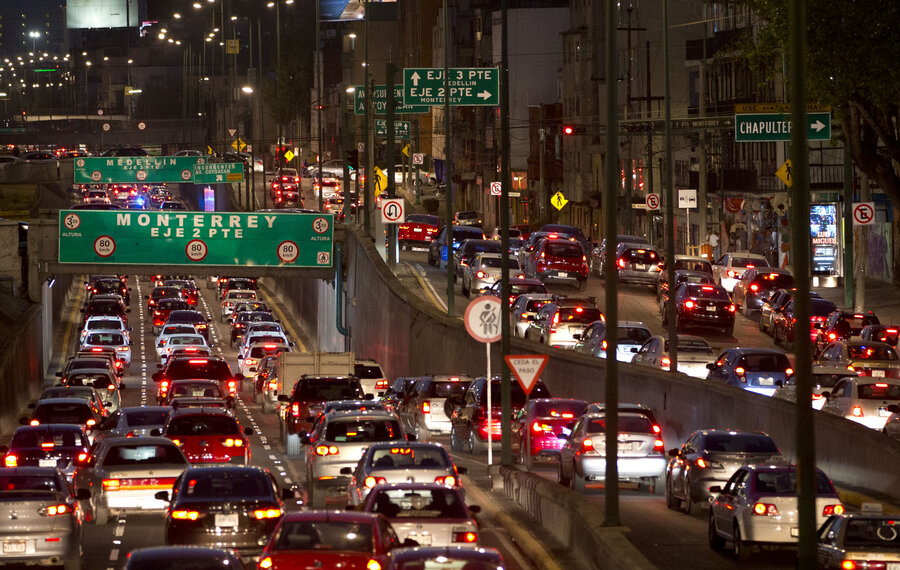How Mexico City plans to fight air pollution
Loading...
To fight high air pollution levels in Mexico City, the city plans to implement a car-driving ban from April 5 to June 30.
Under the city’s new program announced Wednesday, all privately owned cars must remain off streets one day per week as well as one additional Saturday per month. The initiative comes after the city issued a four-day air quality alert on March 14, after the city experienced air pollution at double the national acceptance level. The city’s "Hoy No Circula," or "no circulation," program ramps up the country’s previous efforts to tackle air pollution.
“The definitive ‘no circulation’ program will align with the new rule for vehicular verification that will be presented soon,” tweeted federal Environment Secretary Rafael Pacchiano. “In addition to the car ban, the commission is also working on medium-term solutions like improving public transport.”
Air pollution is not a new issue for Mexico City: In 1992, the United Nations named Mexico City’s air as the most polluted on the planet. And the city has improved its air quality in recent years, but the improvement has caused the government to ease up on quality control. For example, many politicians and environmental activists source March’s pollution alert back to a Supreme Court ruling last year which overturned a rule barring all cars over eight years old from the streets at least one day a week, a move which some say put an extra 1.4 million cars back on the road each day.
But March’s air pollution alert – the city’s first alert in 11 years – confirmed that Mexico City’s air problem was not solved, leading officials to ramp up previous prevention efforts. During previous car-reduction trials, cars could earn exemption stickers after passing tests to ensure they were low emission. However many car owners were able to offer bribes to the sticker distributors, rendering the program ineffective.
But some critics say new renovations to the car-barring system won’t matter: This type of strategy is ineffective for addressing air pollution.
“I just think that once people become drivers in Mexico City they don’t go back,” Lucas Davis, an energy researcher at UC Berkeley, tells Vox. Davis says previous driving bans haven’t improved air quality because instead of switching over to public transportation, drivers use taxis, Uber, Lyft or simply buy a second family car to skirt the rules. “They see a problem and politicians want to do something. These driving restrictions make them feel like they are doing something.”
Instead of driving bans, Davis encourages a city-wide program similar to Singapore’s, where drivers are taxed for driving on major roads during heavy traffic hours. And Davis isn’t alone in his skepticism.
“What’s really behind the problem is the messy urban expansion that affects air quality, ecological reserves, crops, and water resources,” the Center of Atmospheric Studies of Mexico’s national university (UNAM) said in a statement Thursday. “In summary, the sustainability and viability of the Mexican megalopolis.”
UNAM’s Héctor Riveros tells Vice News that even if 500,000 cars were removed from the streets, 800,000 people would flood the public transportation system which likely pollutes more than public cars.
“The Hoy No Circula program has never worked, traffic may have diminished a little, but pollutions levels have not changed,” Dr. Riveros tells Vice. “The only real solution here is to improve the fuel. If we do that the contaminants in the air would reduce between 30 and 50 percent. But the only real solution is people avoiding having to travel long distances to get to work.”
With over 20 million people living in greater Mexico City, it is the third largest city in the world after Tokyo and Delhi. And according to the National Statistics Institute, 4.7 million vehicles were registered in Mexico City in 2014.






